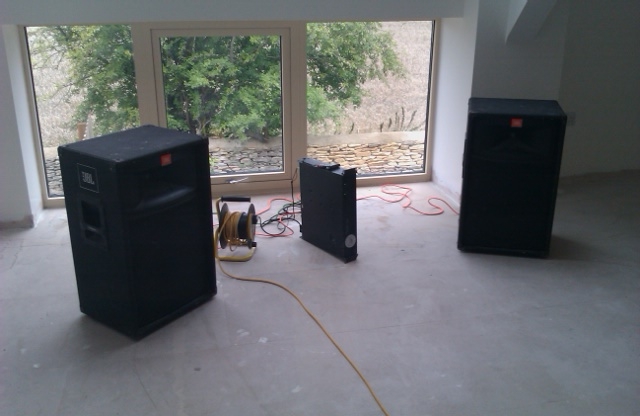Aran Acoustics can carry out sound insulation testing and provide a technical test report suitable for submission to Building Control to show compliance with Approved Document E of the Building Regulations. We also provide remedial advice should the building fail to meet the required standards.
The builder is responsible for demonstrating to Building Control that Part E of the Building Regulations have been met and this is done through pre-completion sound insulation testing. This is applicable to all residential building types and projects.
To demonstrate compliance through sound testing the separating walls, floors and stairs that have a separating function need to achieve the sound insulation values for dwelling-houses and flats set out in Table 1a, and rooms for residential purposes the values set out in Table 1b of Approved Document E. The following tables provide the minimum required sound insulation performance values for residential dwellings and rooms for residential purposes such as Hotels.
Approved Document E generally requires that sound testing be carried out on 10% of each group or sub group within a development. Sound insulation tests will be required across separating walls and/or floors provided that the construction is constant throughout.
New build residential houses and flats must achieve a minimum airborne sound insulation performance value of 45 dB DnT,w+Ctr and impact sound insulation of 62 dB L’nT,w. The performance standards for existing buildings converted into residential houses or flats is slightly more relaxed with the minimum airborne sound insulation performance value of 43 dB DnT,w+Ctr and impact sound insulation of 64 dB L’nT,w.
Approved Document E specifies the airborne sound insulation in terms of a DnT,w + Ctr value. DnT,w is related to the measured difference in noise level between two rooms and is a single-figure value, encompassing the frequency range 100 to 3150 Hz, normalised to a reverberation time of 0.5 seconds.
The Ctr value is a correction applied to the noise level difference and accounts for the low frequency sound insulation performance of the separating wall or floor. Ctr values typically range from about -4 to -12 depending on the type of construction been tested.
Impact sound insulation values are specified in terms of L’nT,w. This relates to the measured weighted, standardised impact sound pressure level in the room below and is a measure of the reduction of impact noise from footfall on the floor above. The lower the L’nT,w value the greater the performance of the separating floor.
An online copy of Approved Document E can be found on the Governments Planning Portal website.
If you require further information on the requirements or wish to obtain a free quote please don’t hesitate to contact us.

